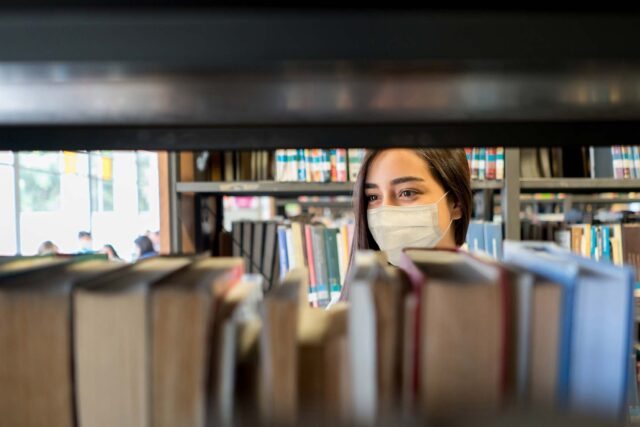Summary
Until recently, the vast majority of California’s community college students-hundreds of thousands of students each year’started in remedial courses that slowed down or halted their academic progress. Attrition was high, particularly for Latino and African American students. Few students went on to complete the gateway courses necessary to transfer to a four-year college (known as transfer-level courses).
After years of important but piecemeal reforms, in 2017 a landmark law (AB 705) transformed placement and remediation at the state’s community colleges. Students are no longer asked to prove they are ready for gateway courses. Instead, colleges must prove if students are not ready.
We examine how AB 705 transformed student access, outcomes, and racial equity in fall 2019, the deadline for implementation. We find:
- Access to college composition is nearly universal, and most students enroll in gateway math. In fall 2019, 96 percent of students who took an English course for the first time enrolled in college composition, and 78 percent of first-time math students took transfer-level math (statistics, pre-calculus, and others). In contrast, only 38 percent had access to transfer-level English in fall 2015, and only 21 percent had access to transfer-level math.
- Increased access allows many more students to complete gateway courses. About 57,000 more students passed college composition with a C or better in fall 2019 than in fall 2015, and roughly 31,000 more students completed transfer-level math. Altogether, 61 percent of first-time English students achieved this milestone in fall 2019, and 40percent did so in math. While there is still a ways to go, these rates are more than double what they were four years ago.
- Corequisites are more effective than traditional remediation. Most colleges now offer a corequisite model where students receive additional academic support while enrolled in the transfer-level course. Overall,students in corequisites are much more likely-by about 30 or more percentage points-to complete a gateway course in one term than students who start in remedial education are to complete the course in one year.
- Progress is across the board, but equity gaps persist. Completion of transfer-level courses has risen by about 20 to 25 percentage points for all racial/ethnic groups. However, Latinos and African Americans continue to see lower completion rates than their peers, even in corequisite courses. At most colleges, Latinos are now more equitably represented among students completing transfer-level courses than they were four years ago, but African Americans remain substantially underrepresented, especially in math.
- When access is restricted, African American and Latino students are left out-especially in math. Colleges with relatively lower levels of access have larger racial inequities in transfer-level enrollment, particularly in math. Several policies could be contributing to these disparities, such as requiring enrollment in remediation, requiring that students meet multiple criteria (e.g., GPA and course grade threshold) for placement into gateway courses, and using reading and writing samples, math problems, and self-assessments to help determine students’ college readiness. In some cases, automating placements may help colleges reduce enrollment in remedial coursework.
Overall, our findings show that when given the opportunity, students can succeed in college-level courses. However, we also identify areas of concern that may limit student access and success, including certain placement methods, instructional approaches, and the availability of nonacademic supports. This last point is particularly important as the COVID-19 pandemic and economic fallout continue to affect nearly every aspect of students’ lives. Ongoing monitoring and evaluation of these areas will be critical to ensure that students have the opportunities and support they need to succeed.
Topics
Access Completion Equity Higher Education PopulationLearn More

Community College English in California’s New Era of Student Access

Community College Math in California’s New Era of Student Access

English as a Second Language at California’s Community Colleges

Ensuring All Students Benefit from Landmark Community College Reform

Mapping Equitable Access to Math at California’s Community Colleges

The Effects of COVID-19 on Transfer-Intending Students in California’s Community Colleges


